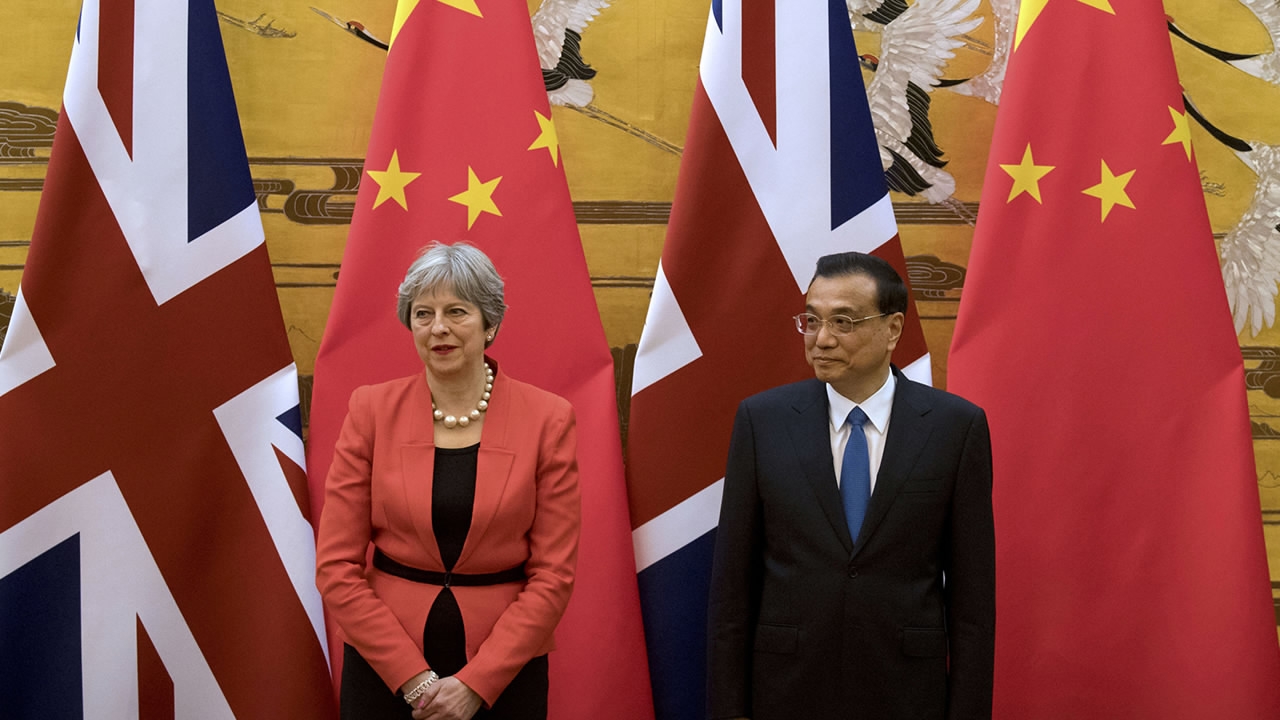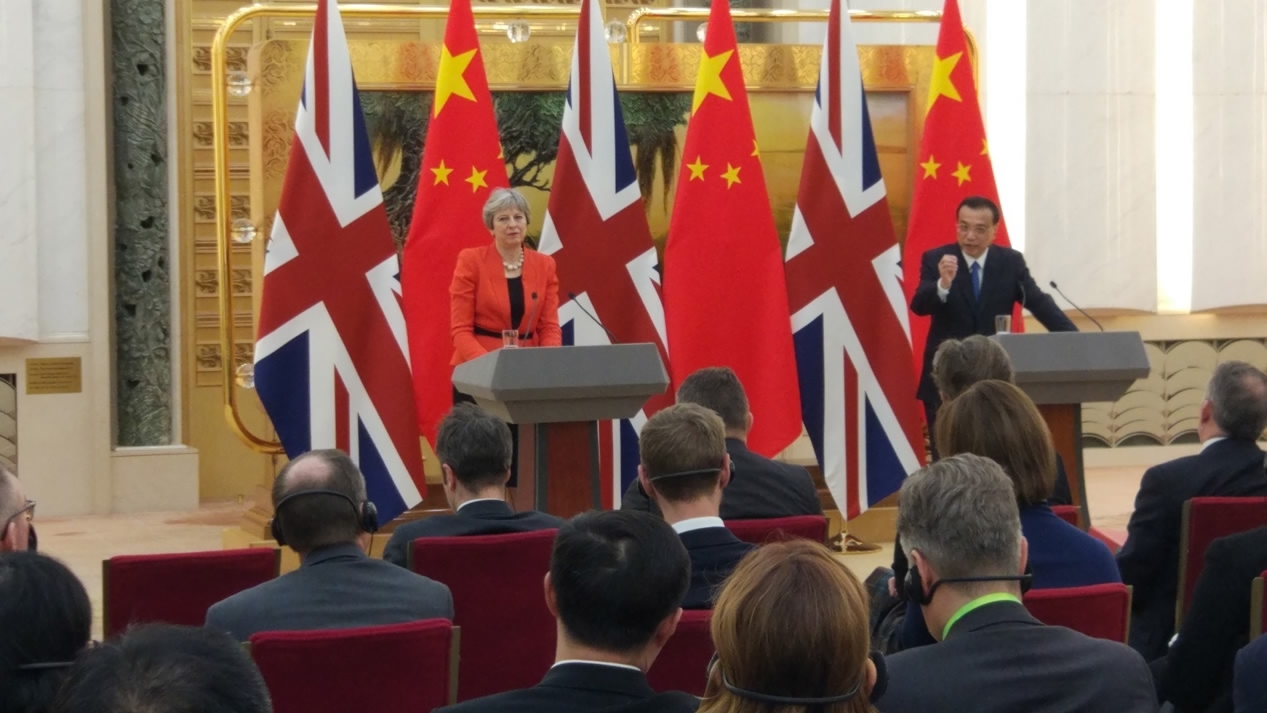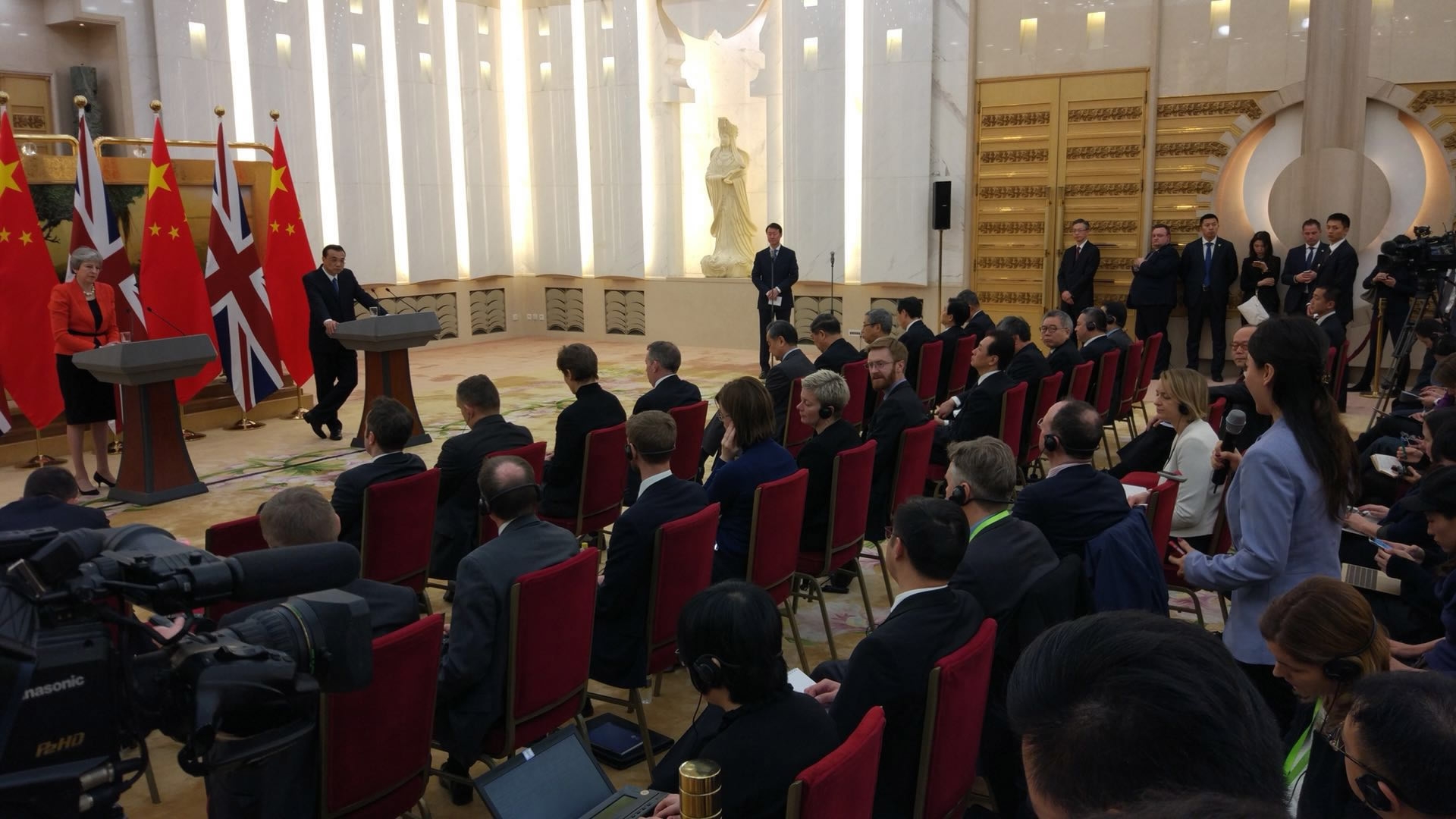
Business
21:35, 31-Jan-2018
Premier Li Keqiang meets British PM Theresa May in Beijing
By CGTN’s Su Yuting

Chinese Premier Li Keqiang held a welcoming ceremony and met with British Prime Minister Theresa May at the Great Hall of the People in Beijing on Wednesday, as she began a three-day visit to China.
May’s arrival comes after President Xi Jinping's historic state visit to the UK in 2015. In the past two years, Xi and May have met at the G20 summits in Hangzhou and in Hamburg. It is May’s first official visit to China since she took office and the first by a British prime minister in four years.

CGTN Photo
CGTN Photo
She is accompanied by her husband Philip and the leaders of 50 British businesses and commercial organizations.
After the welcoming ceremony, Premier Li and May discussed a wide range of international and regional issues, including the Korean Peninsula situation, climate change, bilateral trade, investment, and global economic governance.
As permanent members of the UN Security Council and important members of the G20, both China and the UK agreed to strengthen cooperation that will be beneficial not only for the two countries, but also for world peace and development.
The two sides agreed to cooperate more under the framework of the Belt and Road Initiative. Premier Li and Theresa May also witnessed the signing of agreements covering areas such as the economy and trade, financial services, scientific innovation, environmental protection, education, clean energy and bio-science.

CGTN Photo
CGTN Photo
With this year marking the 40th anniversary of China’s reform and opening-up, Chinese leaders have promised that the country will continue to open its market.
During a press conference after the talks, Premier Li was asked by CGTN what measures China and the UK will take to boost globalization and free trade.
“We both are major economies, major trading nations,” he said. “We need to work to expand trade between our two countries.”
He also vowed China will continue to advance trade liberalization and will not block normal movement of money.

SITEMAP
Copyright © 2018 CGTN. Beijing ICP prepared NO.16065310-3
Copyright © 2018 CGTN. Beijing ICP prepared NO.16065310-3